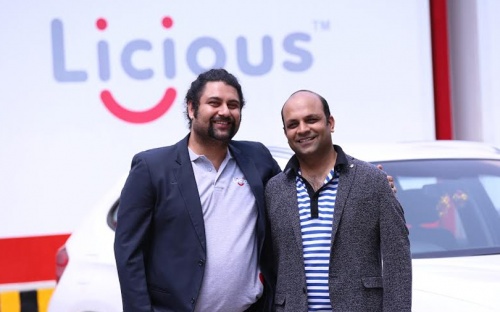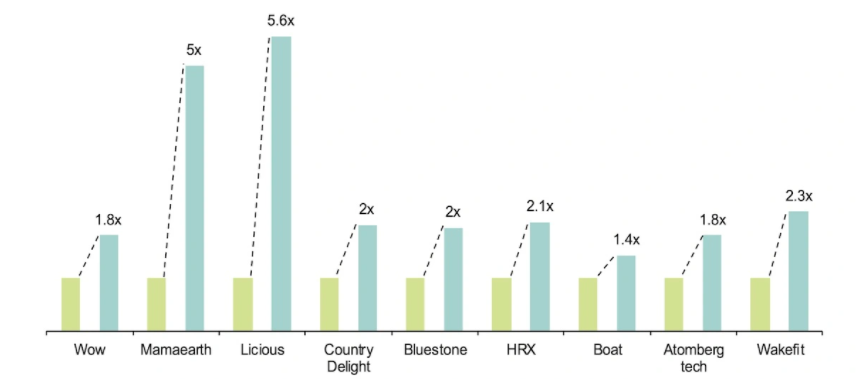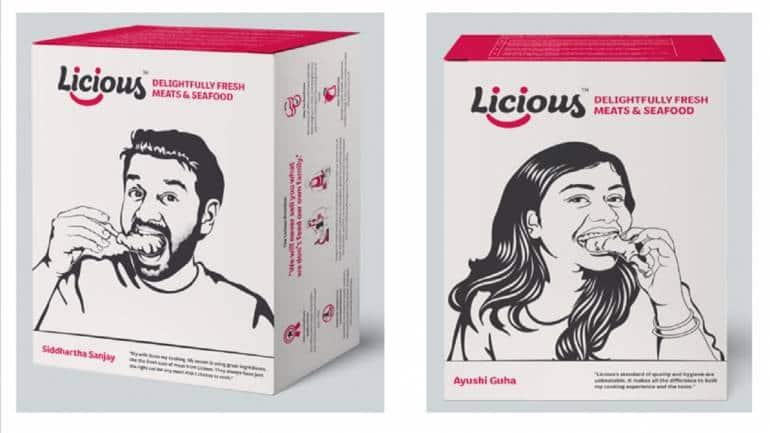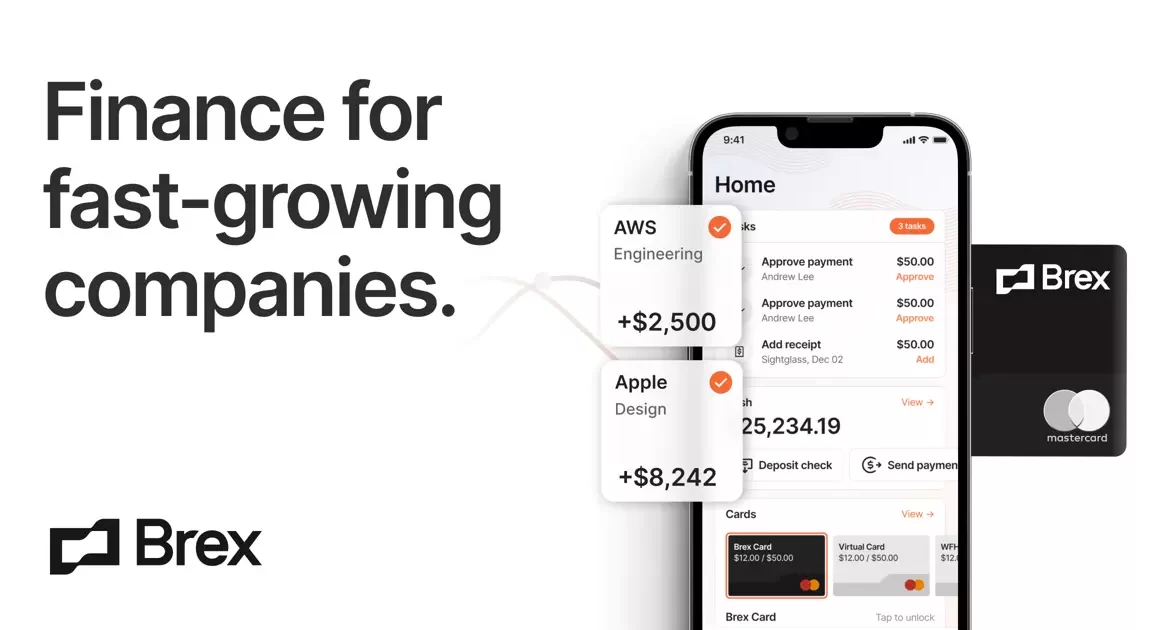Licious, located in Bengaluru, is India’s largest D2C unicorn. The farm-to-fork concept, used by the startup, which includes owning the whole back-end supply chain and cold chain, is a highly successful and scalable model which rates them so high in meat industry.
It operates in 28 cities of India including Bengaluru, Hyderabad, Delhi, Gurugram, Faridabad, Noida, Mumbai, Pune, Chennai, Chandigarh, Jaipur, Coimbatore, Kochi, Visakhapatnam, Vijayawada, Pondicherry, and Kolkata. The startup operates five processing facilities, one in Hyderabad, one in Mumbai, one in Gurugram, and two in Bengaluru.
Licious has received FSSC22000 UKAS accreditation for food safety. Licious is also the first brand in the sector to commit to full ESG compliance. To that purpose, it has formed a task group that is actively striving to achieve the goal. Licious signed the ‘Commitment to Chicken Welfare‘ in late 2021, in collaboration with the World Animal Protection India group. Licious is the first Indian brand to make this commitment. It received the Thought Leadership Award for ESG Goals in December 2021.
Licious established their first EBO in Bangalore in April 2022. The EBO is a one-of-a-kind offline meats and seafood store that provides an unforgettable experience. The shop also features Licious Kitchen, an area where consumers can prepare and eat the Licious RTC range. And exclusively provide Halal services.
Backed by prestigious investors such as Temasek, 3One4 Capital, and IIFL, the startup operates an eponymous e-commerce site that sells meat and seafood in over a dozen Indian cities. It has established a supply chain network in multiple Indian cities to purchase meat and seafood, keep it fresh, and deliver it within hours of the order.
It is one of a rising set of enterprises that are disrupting the meat and seafood industry, which has been mostly unstructured and neglected.
History of Licious / Origin of idea for Licious
Abhay Hanjura and Vivek Gupta were working on their final year project at the Indian Institute of Technology (IIT) Delhi in the summer of 2015.
There were no good online meat retailers in India at the time. The only alternatives were supermarkets or butcher shops, which sold low-quality meat and poultry at exorbitant costs.
They had a business concept, but they weren’t sure if it would succeed. They decided to try it anyhow.
They quit their jobs, borrowed money from family and friends, and launched Licious, India’s first online meat and quality chicken store.

They recognized a high demand for fresh, high-quality meat, but the present system was inefficient and frequently resulted in food waste.
Licious was founded to address these issues and give Indian consumers with a better shopping experience.
With a large product range and great customer service, the startup has now grown to become India’s top online meat and poultry retailer.
Business Model of Licious
Licious operates on a farm-to-fork approach, controlling the full back-end supply chain as well as the cold chain. It also has a subscription concept that allows users to buy things and schedule online deliveries in advance. On their website, they also have an independent recipe area. It enables consumers to prepare delectable non-vegetarian cuisine.
Everything is the company’s duty, from acquisition to processing to storage to delivery to the consumer. With over 3500 people, the Licious business strategy claims to fulfill orders within 90-120 minutes. And it handles over a million orders every month. Transactions are regarded to be incredibly safe and secure here. The company’s business plan is designed to keep each product fresh, outstanding, and superior quality.
A team of quality members handpicks each and every product supplied. The crew ensures that the weight and age of the chicken, fish, or any other animal are within their prescribed parameters. To keep the meat fresh and maintain its natural fluids, they keep it at a temperature of 0-5 degrees throughout the washing, cutting, storage, and even delivery operations. It contains no antibiotics, chemicals, artificial preservatives, color, or flavoring.
D2C heavyweight
Using D2C to reach out to consumers has assisted Licious in achieving 90% return clients, who account for 85% of their sales.
A cursory look at the D2C activities to validate the Licious business model. For example, consider how a conventional beef supply chain functioned prior to D2C:
Farmers → Middlemen → Wholesalers → Butchers → Retailers
However, in the D2C arena, where Licious and a few other firms operate, the supply chain merely includes:
Farmers → Butchers → Startups
This assures that the companies have a profit margin of 30-40%.
Also Read: Dunzo – Creating A New Market Through New-Age Experiential Marketing
Growth of Licious
To date, the Licious l has a customer base of over 1 million unique customers. The average cart size is around INR 700. The startup made INR 1.47 crores in revenue in its first year of operation in 2015. The revenue earned in FY 2019-20 was INR 180 Crores.
Licious claims to have expanded at a CAGR of 300% year on year since its beginning, providing 300+ SKUs to consumers in 90-120 minutes and processing about 1 million orders each month. Between May and December 2020, when coronavirus shutdowns made doorstep delivery the new normal, its overall income increased sixfold. According to the company, the average consumer purchases Licious items two to three times each month and spends close to INR 22,000 per month. In addition, the firm decreased its net losses by 66% to INR 146.3 Cr in FY2019-20 from INR 438.7 Cr the previous year..
The startup does not provide any stats, but it has benefited from the rise in popularity of direct-to-consumer products during the epidemic. It said in October that its revenue had increased by more than 500% year on year.

Licious Funding
Licious has received $490 million in investment across 11 rounds. One of their investment rounds was a $150 million Series F on March 15, 2022.
Licious secured $52 million from IIFL AMC’s Private Equity Fund in October 2021 at a billion-dollar value, making it one of over 40 firms to join the unicorn club in 2021.
Concluding the licious story..
Since their humble beginnings in 2015, Licious has gone a long way. What began as a modest business has grown to become India’s top online meat retailer.
They have altered the way Indians purchase chicken and show no signs of slowing down. Licious is an excellent illustration of how e-commerce can make customers’ lives easier and more convenient.
You may get fresh, high-quality meat and chicken delivered to your house at the push of a button. And, with their 100% satisfaction guarantee, you can be confident that you’re getting the greatest quality available.
The tale of Abhay and Vivek exemplifies how entrepreneurship can provide opportunities and alter lives.
Licious began with a concept and a lot of hard work, and they are now transforming the way Indians buy meat.
To read more content like this, subscribe to our newsletter



